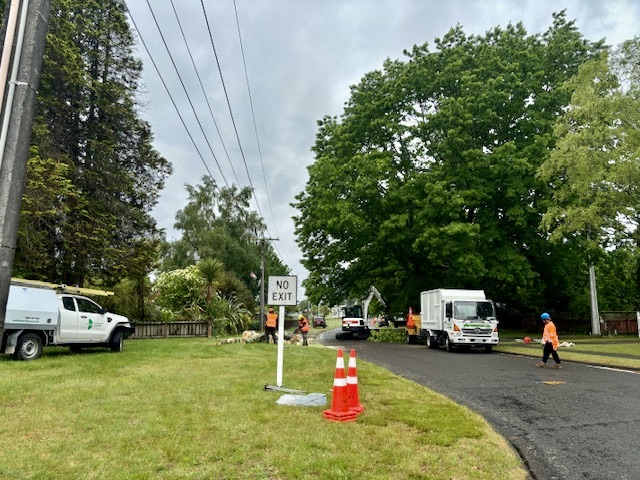
With local council elections only one week away, we cannot resist such a convenient opportunity to remind voters about Toe-Paw council’s response after trying to destroy a protected Red Oak tree on Taupahi Road. The unauthorised Council vandals demolition gang arrived without any prior warning on 16 November, 2024, over ten months ago, determined to demolish the tree. They were stopped just in time to leave the bare bones of a majestic oak for all to witness how Turangi’s trees have been abused. i.e This is not the only reported loss of mature trees on Council land.
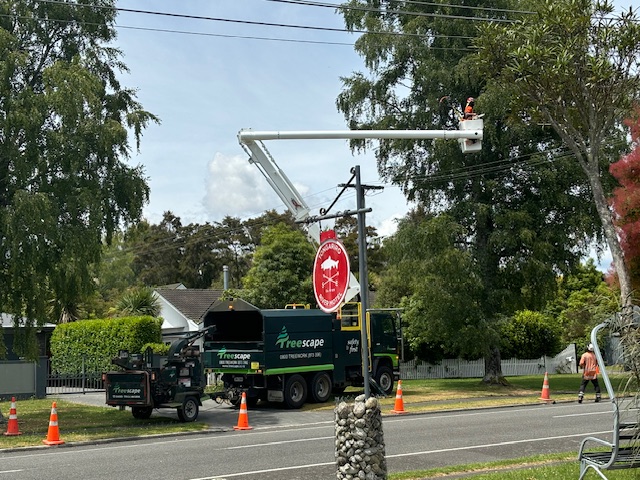
The Red Oak carnage commenced in Spring, 2024. Since then Council employees responsible (?) have been anxiously looking for somewhere to hide, or someone else to blame. The longer it has taken, the more guilty they have become and the higher residual value has been attached to the Red Oak.
Toe-Paw Council have failed Turangi, again. The first photo below was on “execution day” – 16 November 2024.
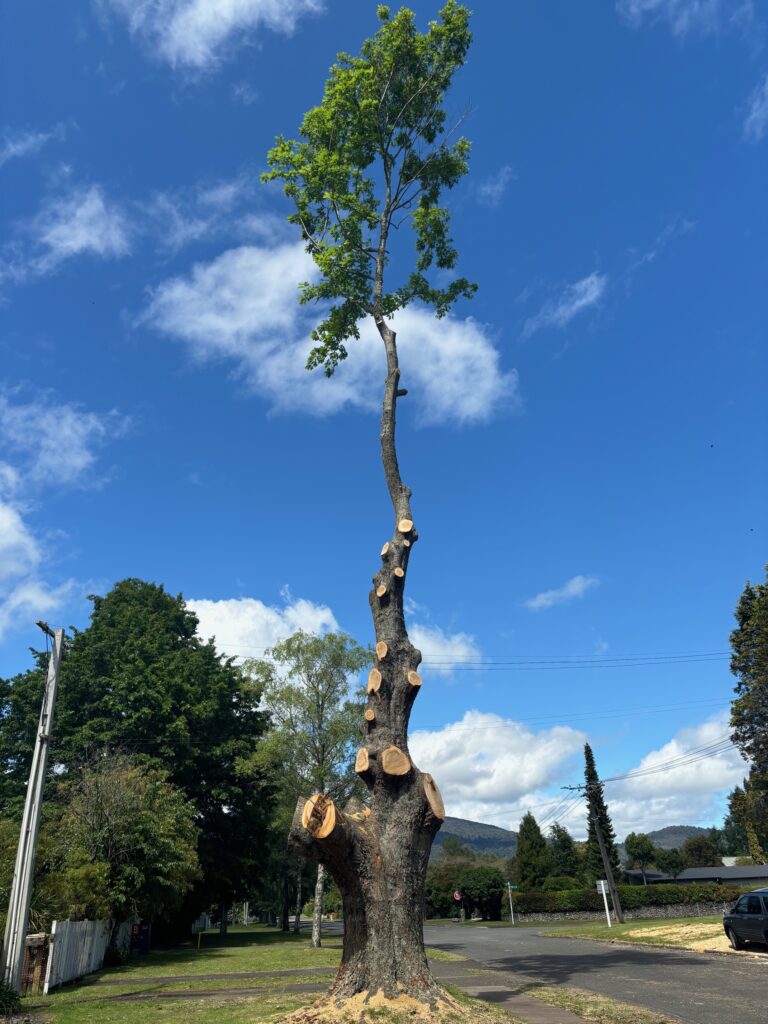
The Council have procrastinated now for so long the tree has now sprouted new Spring foliage. Any approvals or attempts at removing the dead tree have now gone. It is alive! That must add considerably to the $ value. A new “fast track” resource consent application will be needed.
The next photo was as at May 2025
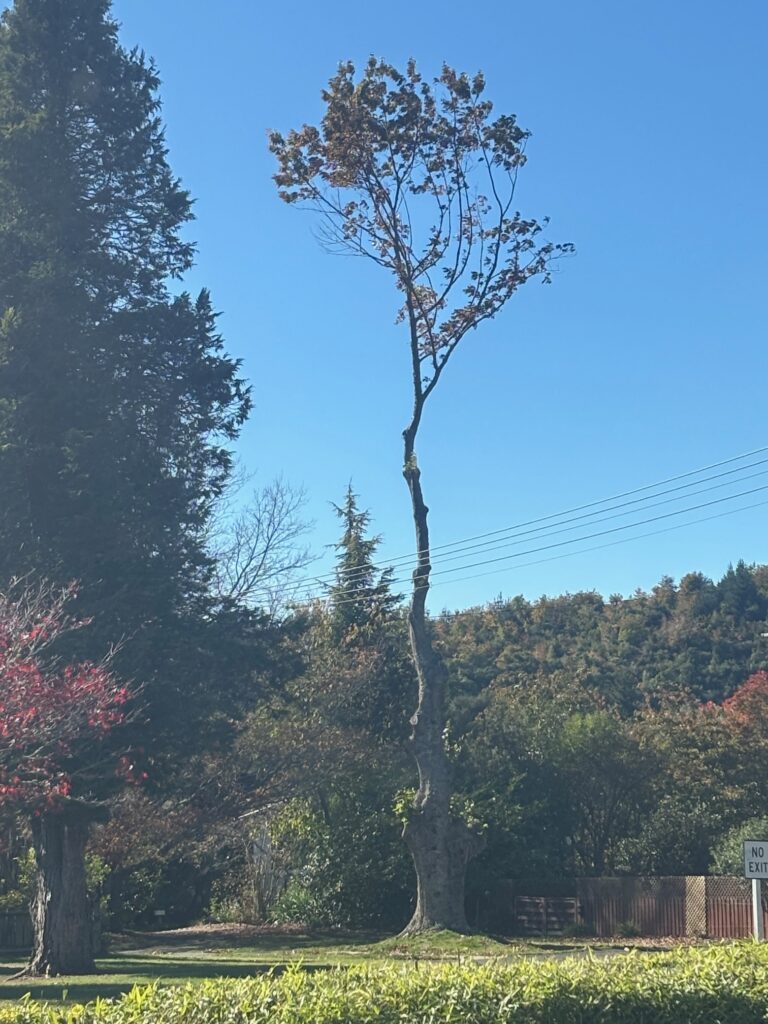
But wait – the Red Oak has survived! So now there is sufficient photographic evidence to consider how much more $ compensation will be due to long-suffering ratepayers on Taupahi Road. Other unfortunate precedents of the destruction of mature oak trees and compensation assessments are now becoming more important. Toe-Paw council will now also need to factor in the costs of being committed to the long-term maintenance efforts by Arborists for watering and management needed to enhance the live oak with its best chance.
The latest example from Texas is close to US$1 million – full story below. The value of their tree was measured in the age – claimed to be over 400 years – older than the USA! Their tree measures 51 inches in diameter. (English Oak trees are always measured in colonial inches.) Turangi’s Red Oak skeleton is double that. That would suggest it was planted before the European colonial invasion. Excellent! Any historic mystery adds more value.
The photo below was taken from my living room on 21 September 2025. (Note to SWMBO – the Piri Road hedge has still not been trimmed.)
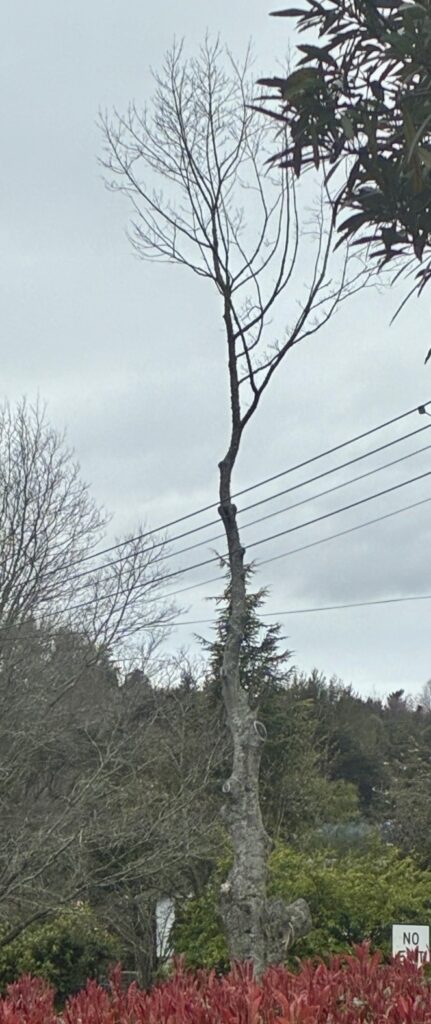
The more exciting photo below shows fresh new buds appearing on 5 October, just in time for the Council election. For some reason Toe-Paw council are always so much more sensitive and aware of voters’ real concerns closer to elections.
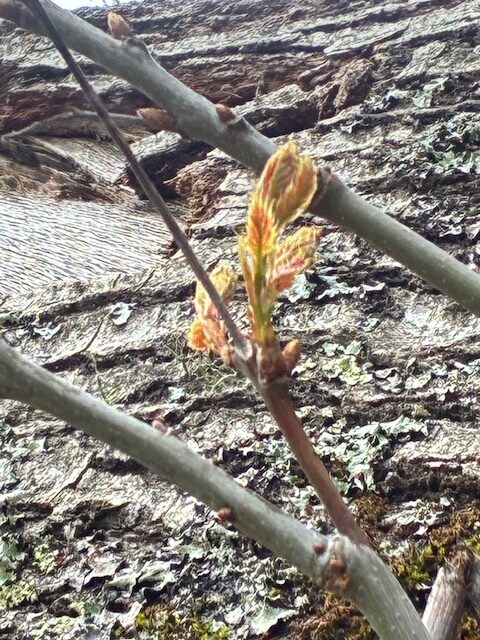
The Taupahi Oak is already famous as a tourist gimmick. TRM blogs have previously reported tourists calling in to view Council’s disaster. Toe-Paw Council will need to reconsider now it is seen to be still alive and growing in a desperate recovery effort. A new programme and recovery decision will be needed. More meetings. More consultants. More rates. More communications. More new growth can be seen up in the heavens in the latest photo on 5 October below.
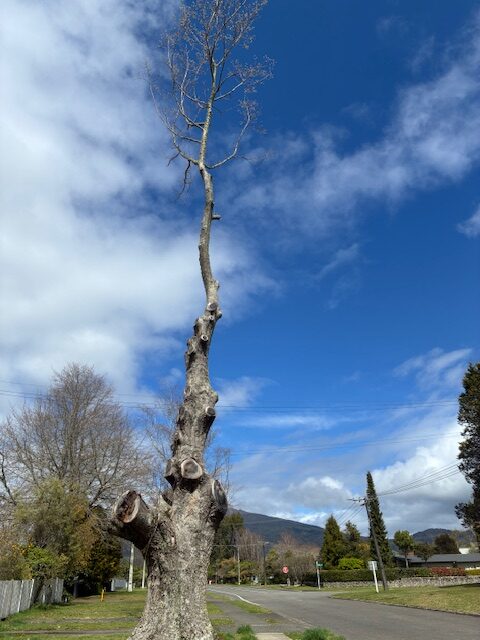
Taupahi residents’ committee are also meeting to decide on an appropriate catchy name for their long-suffering Red Oak. A more marketable commercial manner of characterisation is well recognised as essential in adding $ value. An example is the Texas tree below – called the Old Stagecoach Heritage Oak Tree, but locals nicknamed it “Jolene.” Please send all nickname suggestions to SWMBO.
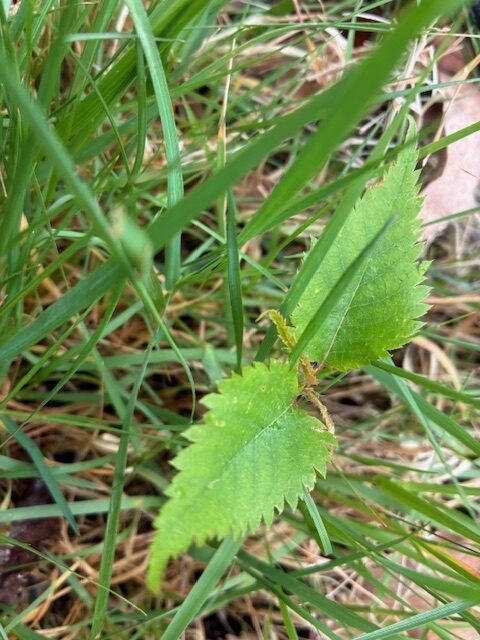
Even new acorns have now sprouted around the skeleton’s trunk in sympathy for the mother tree’s plight, in case they will be needed in the future.
For the Toe-Paw Council assessor, TRM have also commissioned an independent arborist’s report on the extra added value of Oak trees from a new consultancy firm which trades under the style of AI:
Restoring mature oak trees provides significant ecological benefits, such as enhanced carbon sequestration and support for rich biodiversity, as well as crucial economic and social advantages, including improved air and water quality, increased property value, and aesthetic and recreational opportunities. Mature oaks are irreplaceable for their established roles in ecosystems and cultural heritage, making their restoration a powerful investment in environmental health and human well-being.
Meanwhile, the report on the Texas oak may assist Toe-Paw Council’s Arborist’s Valuation Committee assessment.
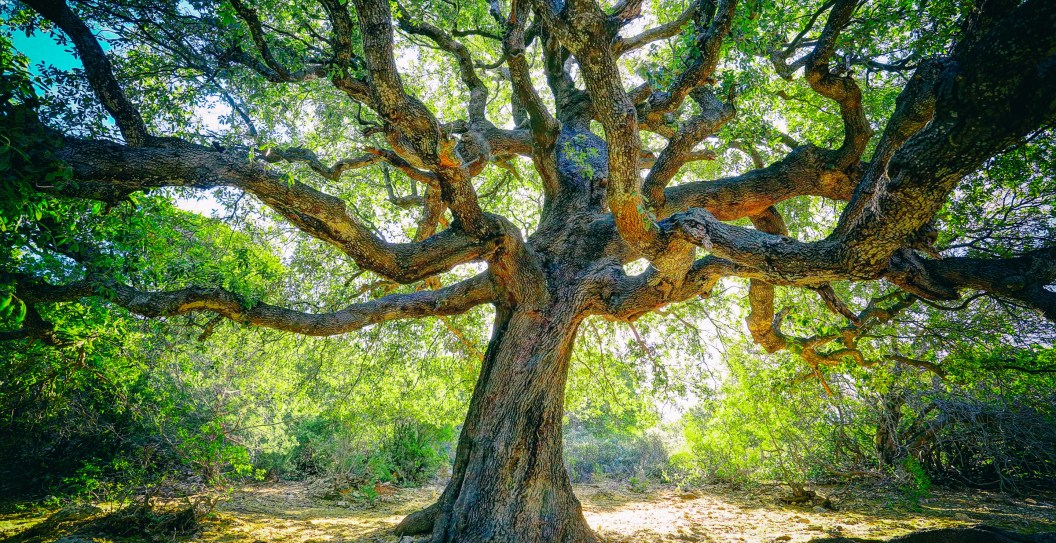
The Amount Of Money Texas Is Spending To Relocate A Centuries Old Oak Tree: Here’s Why
By Matthew Wilson | September 30, 2025
Officials are in Texas are doing everything in their might to preserve a centuries old oak tree. But the conservation efforts is going to cost a pretty penny.
Reportedly, it’s going to cost nearly $1 million to relocate the oak tree. The plant is located on the side of a road, and that’s the issue. They’re planning on widening the road in the area, putting the tree in danger. Rather than just cut down the plant and be done, they’re attempting to relocate it to the new area.
The tree is called the Old Stagecoach Heritage Oak Tree, but locals nicknamed it “Jolene.” It measures 51 inches in diameter. It will cost around $932,800 for the city of Kyle to move the tree to a new location. NBC affiliate KXAS reports that the relocation comes after the future of the tree was initially up in the air, but the decision was made to save the tree.
Oak Tree Removal
It’s about 400 years old. Protesters tried to stop the destruction of the tree. It’s been “a topic of discussion since 2020 when staff began evaluating roadway improvements that were later approved by voters.”
“The tree is older than the United States,” local protester Casey Landers said in January. “We need to preserve it.”
Initially, officials considered “removing the tree and preserving the wood for an art project, relocating the tree, and realigning the Old Stagecoach Road Project around the tree.”
Ultimately, they decided to preserve the tree after a petition drew thousands.
“I have lived in Kyle for 25 years and that tree has been a HISTORIC part of our town. That tree has been here long before us, it deserves to be protected and preserved to last a LONG time after us,” a Kyle resident named Sam wrote.
They’re planning to move the tree to an area a quarter-mile away. They’re placing the tree at a new parklet. The area was chosen thanks to “its proximity to the tree’s current location and its matching soil profile.”
They plan to remove the oak tree later this fall.
“Although relocation does not guarantee survival according to multiple contracted studies done on behalf of the City of Kyle by certified arborists, the city is committed to the long-term maintenance efforts needed to give the live oak its best chance,” city officials said online.
